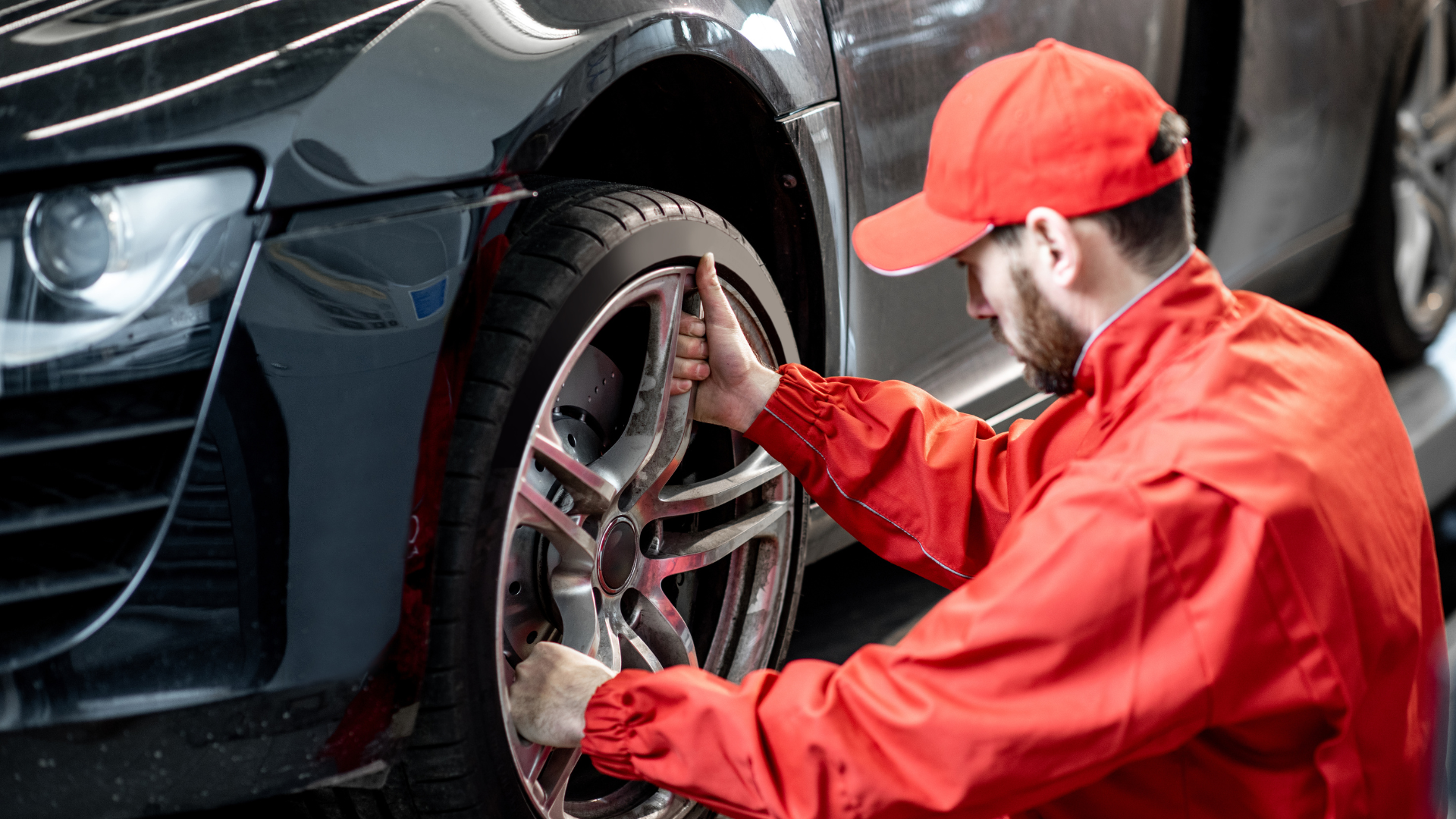Getting behind the wheel for the first time brings excitement, freedom, and a whole new set of responsibilities. Among the most important skills you’ll develop as a new driver is understanding basic car maintenance practices that keep your vehicle running safely and efficiently. Proper vehicle care isn’t just about avoiding breakdowns; it’s about protecting your investment, ensuring passenger safety, and preventing small issues from becoming expensive repairs.
Many new drivers feel overwhelmed by the complexity of modern vehicles, but car maintenance doesn’t require advanced mechanical knowledge. Understanding fundamental care practices helps you identify potential problems early, communicate effectively with service professionals, and make informed decisions about your vehicle’s needs. These skills become invaluable throughout your driving life, saving money and preventing dangerous situations.
The consequences of neglecting basic vehicle care can be severe, ranging from inconvenient roadside breakdowns to serious safety hazards. New drivers who establish good maintenance habits from the beginning enjoy more reliable transportation, lower repair costs, and greater confidence in their vehicle’s performance. This comprehensive guide covers essential practices that every responsible driver should master.

1. Monitor Fluid Levels Regularly
Vehicle fluids serve as the lifeblood of your car’s various systems, requiring regular monitoring to ensure optimal performance and prevent costly damage. Engine oil lubricates moving parts and prevents overheating, while coolant regulates engine temperature during operation. Understanding how to check these levels and recognize warning signs helps prevent major mechanical failures.
Brake fluid plays a critical role in stopping power, transmitting force from your brake pedal to the wheels. A car brake fluid change becomes necessary when the fluid becomes contaminated or loses its effectiveness over time. Dark, dirty brake fluid or a spongy brake pedal feeling indicates immediate attention is needed to maintain safe stopping ability.
Power steering fluid enables easy steering control, particularly at low speeds and during parking maneuvers. Low fluid levels can cause steering difficulties and, potentially, power steering pump replacement if ignored. Regular checking prevents expensive repairs and maintains comfortable driving conditions.
Warning signs to watch for: Unusual puddles under your parked car, dashboard warning lights, or changes in fluid color and consistency that indicate contamination or system problems.
2. Understanding Your Brake System Health
Your vehicle’s braking system represents the most critical safety component, requiring consistent attention and professional brake system inspection cost considerations in your budget. Understanding basic brake function helps you recognize problems before they become dangerous or expensive to repair.
Brake pads wear down gradually through normal use, and when completely worn, they create metal-on-metal contact. This condition not only damages brake rotors but also leads to more expensive car maintenance than a simple pad replacement. If you hear squealing, grinding, or feel vibration while braking, it’s a clear sign that immediate professional attention is needed.
If your steering wheel shakes when braking, this typically indicates warped brake rotors that need resurfacing or replacement. Ignoring this symptom can lead to reduced stopping power and increased repair costs. Professional diagnosis ensures proper repair and restores safety performance.
Brake lights not working properly create serious safety hazards for following drivers and may result in traffic violations. Regular checking of all brake lights, including the center high-mounted brake light, prevents accidents and legal issues.
Maintenance schedule: Have brake systems professionally inspected every 12,000 miles or when you notice any changes in braking performance, unusual noises, or warning lights.
3. Climate Control System Care
Proper climate control maintenance ensures comfort during extreme weather while preventing expensive repairs to complex systems. Auto ac repair becomes necessary when refrigerant leaks, compressor failures, or electrical issues affect cooling performance.
Car air conditioning service includes refrigerant level checks, leak detection, and component inspection, all essential aspects of routine car maintenance. These services help maintain efficient cooling, prevent system damage, and extend component life. Regular upkeep ensures optimal performance, especially during hot weather when the system is under maximum demand.
Common symptoms of climate control problems include insufficient cooling, unusual odors, strange noises, or visible refrigerant leaks under the vehicle. Early attention prevents minor issues from becoming major system failures requiring extensive repairs.
Seasonal considerations: Run your air conditioning system monthly during winter to maintain seals and prevent component deterioration from lack of use.
4. Steering and Suspension System Awareness
Your vehicle’s steering and suspension systems play a vital role in car maintenance, ensuring smooth rides and precise control. Proper car maintenance helps you understand these systems and recognize early signs of issues that may affect safety and comfort.
Suspension repair service becomes necessary when components wear out due to road impacts, age, or routine use. Regular car maintenance can reduce the chances of premature wear by keeping these systems in top condition. Ignoring these signs can lead to uneven tire wear, poor handling, and a rough ride. A professional inspection as part of scheduled car maintenance helps detect component failures and ensures your vehicle remains safe and reliable.
Shock absorber replacement represents a common suspension repair that significantly affects ride quality and vehicle control. Worn shocks allow excessive bouncing, reduce tire contact with the road surface, and increase stopping distances during emergency braking situations.
If your car makes noise when turning left or right, this often indicates worn steering components, suspension bushings, or CV joints that require professional attention. These sounds shouldn’t be ignored as they can indicate safety-related component failures.
Performance indicators: Excessive bouncing after hitting bumps, uneven tire wear patterns, or difficulty maintaining straight-line driving suggest suspension problems requiring attention.
5. Engine Temperature Management
Engine overheating represents one of the most serious mechanical problems that can damage expensive internal components. As part of regular car maintenance, understanding how the cooling system functions and recognizing overheating symptoms can prevent catastrophic engine failure and costly repairs.
Engine overheating in traffic is a common issue addressed during car maintenance inspections. It often results from inadequate airflow through the radiator, malfunctioning cooling fans, or poor coolant circulation. Stop-and-go traffic places added stress on the cooling system, revealing issues that proper car maintenance could detect early. Consistent car maintenance ensures your cooling system performs efficiently, even under tough driving conditions.
Regular coolant system maintenance includes checking fluid levels, inspecting hoses for leaks or deterioration, and ensuring proper radiator function. Neglecting cooling system maintenance can result in complete engine failure, requiring replacement or extensive rebuilding.
Emergency procedures: If your engine begins overheating, turn off the air conditioning, turn on the heater, and safely pull over immediately. Never remove the radiator cap from a hot engine, as pressurized coolant can cause severe burns.
6. Electrical System Fundamentals
Modern vehicles rely heavily on electrical systems for engine management, safety features, and comfort functions. As part of regular car maintenance, staying on top of electrical performance helps avoid unexpected failures. Car maintenance routines often include inspecting charging systems, lighting, and electronic components to ensure everything functions smoothly.
Car maintenance also involves timely car battery replacement, which prevents starting issues and protects sensitive electronics. Most batteries last 3–5 years, but climate and usage impact their lifespan. In colder climates or extreme heat, car maintenance becomes even more crucial, as these conditions accelerate battery deterioration.
Alternator issues can leave you stranded with a dead battery and may harm essential electronics. Car maintenance checks often identify early alternator warning signs—such as dim headlights, warning lights on the dash, or malfunctioning electrical accessories—before they escalate into costly repairs.
Preventive measures: Clean battery terminals regularly, test battery voltage periodically, and address electrical problems promptly to prevent system damage and starting failures.
7. Tire and Wheel Care Essentials
Proper tire maintenance ensures safe handling, optimal fuel economy, and maximum tire life. Understanding tire pressure requirements, tread depth monitoring, and rotation schedules helps you maintain performance while preventing premature replacement.
Tire maintenance begins with maintaining correct tire pressure, which directly affects handling, fuel efficiency, and wear patterns. Under-inflated tires generate excess heat, wear unevenly, and reduce mileage. Over-inflated tires cause harsh rides and are more prone to road damage.
Regular tire maintenance also includes timely rotations and inspections to ensure even tread wear and detect early signs of damage, extending the overall lifespan of your tires.
Regular tire rotation ensures even wear patterns and extends tire life significantly. Most vehicles require rotation every 5,000-7,500 miles, though specific patterns depend on tire type and vehicle configuration. Professional rotation service ensures proper patterns and torque specifications.
Safety considerations: Replace tires when tread depth reaches 2/32 inch, check pressure monthly, including the spare tire, and inspect for damage, uneven wear, or aging that affects safety.
8. Glass and Visibility Maintenance
Clear visibility is essential for safe driving, making windshield and window maintenance crucial safety practices. Mobile auto glass repair services provide convenient solutions for chips, cracks, and replacement needs that restore optimal visibility.
Small windshield chips can spread into large cracks that require complete windshield replacement. Prompt repair of minor damage prevents more expensive replacements and maintains structural integrity during accidents.
Wiper blades require regular replacement to maintain clear visibility during precipitation. Worn blades create streaking, reduce clearing effectiveness, and can scratch windshield surfaces. Replace wiper blades every 6-12 months or when performance deteriorates.
Maintenance practices: Clean windows regularly inside and outside, replace wiper blades seasonally, and address glass damage immediately to prevent spreading and maintain safety.
9. Regular Service Schedule Adherence
Following manufacturer-recommended car maintenance schedules prevents problems and maintains warranty coverage while ensuring optimal vehicle performance. These service intervals are created based on real-world testing to enhance reliability and reduce repair costs.
Regular car maintenance helps spot issues early, avoiding sudden breakdowns and costly repairs. One of the most critical tasks in car maintenance is the oil change, which varies based on vehicle type, driving habits, and oil used. In severe conditions like stop-and-go traffic or dusty climates, car maintenance requires more frequent service intervals than normal.
Professional car maintenance includes thorough inspections of components like belts, hoses, and filters—parts that wear out over time and demand timely attention. Neglecting such car maintenance can lead to inefficient vehicle operation and premature part failure.
Relying on trusted technicians for car maintenance ensures that developing issues are caught early, extending your car’s lifespan and keeping you safe on the road. Whether it’s routine fluid checks or major system evaluations, consistent car maintenance keeps your vehicle in peak condition..
Record keeping: Maintain detailed service records that document all maintenance performed, including dates, mileage, and services completed. These records help track warranty coverage and support resale value.
10. Warning Sign Recognition and Response
Developing sensitivity to changes in your vehicle’s behavior helps you identify problems early when repairs are less expensive and safety risks are minimized. Understanding normal vehicle operation makes abnormal conditions more apparent and actionable.
Dashboard warning lights provide immediate notification of system problems requiring attention. Ignoring these warnings can result in expensive damage and safety hazards. Understanding basic warning light meanings helps you respond appropriately to different situations.
Unusual noises, vibrations, or performance changes often indicate developing mechanical problems. Learning to distinguish normal sounds from problematic noises helps you communicate effectively with service professionals and address issues promptly.
Response strategies: Don’t ignore warning signs or postpone necessary repairs. Address problems promptly to prevent more extensive damage and maintain safe, reliable transportation.
Common Challenges and Consequences
Financial Planning for Vehicle Care
New drivers often underestimate the ongoing costs of vehicle ownership beyond fuel and insurance. Brake line repair, major component replacements, and unexpected breakdowns can strain budgets and create financial stress when not anticipated properly.
Emergency repairs typically cost more than scheduled maintenance and often occur at inconvenient times. Building an emergency fund specifically for vehicle repairs helps manage unexpected expenses without compromising other financial obligations or transportation needs.
Preventive maintenance costs significantly less than reactive repairs but requires discipline and planning to implement consistently. Many drivers skip routine services to save money, ultimately spending more on extensive repairs that could have been prevented.
Finding Reliable Service Providers
Establishing relationships with trustworthy service providers before problems occur ensures access to quality repairs when needed. Research local shops, read reviews, and ask for recommendations from experienced drivers in your area.
Understanding basic automotive terminology and service procedures helps you communicate effectively with service professionals and avoid unnecessary repairs or overcharging. Educated customers receive better service and more honest recommendations.
Getting second opinions on expensive repairs provides confidence in repair decisions and helps identify shops that recommend unnecessary work. However, balance this practice with the urgency of safety-related repairs that shouldn’t be delayed.
Balancing DIY and Professional Service
Some maintenance tasks are appropriate for new drivers to learn, while others require professional expertise and specialized tools. Understanding this distinction prevents damage from attempted repairs beyond your skill level while building confidence through successful basic maintenance.
Simple tasks like checking fluid levels, replacing air filters, or changing wiper blades provide learning opportunities and cost savings. However, brake repairs, electrical work, and engine internal repairs require professional expertise for safety and reliability.
Building Long-term Vehicle Care Habits
Successful car maintenance requires developing consistent habits rather than relying on crisis management when problems occur. Regular attention prevents most major issues while maintaining optimal performance and reliability throughout vehicle ownership.
Start with basic weekly checks, including fluid levels, tire pressure, and visual inspections for obvious problems. These simple practices identify most developing issues before they become serious or expensive to repair.
Develop relationships with reliable service providers who understand your vehicle and driving patterns. Consistent service relationships provide better care recommendations and help identify patterns in vehicle behavior that indicate developing problems.
Keep detailed maintenance records that track all services, repairs, and observations about vehicle performance. These records support warranty claims, help identify recurring problems, and provide valuable information for service professionals diagnosing complex issues.
FAQ Section
Q: How often should I check my vehicle’s fluid levels? A: Check engine oil weekly, coolant monthly, and brake fluid every few months. If you notice any leaks under your parked car or dashboard warning lights, check relevant fluid levels immediately. Low brake fluid or engine oil can cause serious safety hazards and expensive damage if ignored.
Q: What are the most important warning signs that indicate I need immediate professional attention? A: Dashboard warning lights (especially oil pressure, brake, or temperature warnings), unusual noises when braking or turning, steering wheel vibrations, engine overheating, or any fluid leaks require immediate professional diagnosis. Don’t ignore these symptoms as they often indicate safety-related problems.
Q: How much should I budget annually for basic vehicle maintenance? A: Budget approximately $500-1200 annually for routine maintenance including oil changes, tire rotations, brake inspections, and scheduled services. Older vehicles or those with high mileage may require additional repairs. Emergency repairs can add significantly to these costs, making an emergency fund important.
Q: Can I perform basic maintenance tasks myself, or should everything be done professionally? A: New drivers can safely check fluid levels, replace air filters, change wiper blades, and monitor tire pressure. However, brake repairs, electrical work, engine repairs, and safety-related systems should always be handled by qualified professionals to ensure safety and proper function.
Q: How do I know when my brake system needs attention? A: Warning signs include squealing or grinding noises when braking, steering wheel vibration during braking, a brake pedal that feels spongy or goes to the floor, brake warning lights, or any changes in braking performance. Have brake systems inspected immediately if you notice any of these symptoms, as brake problems are serious safety hazards.







